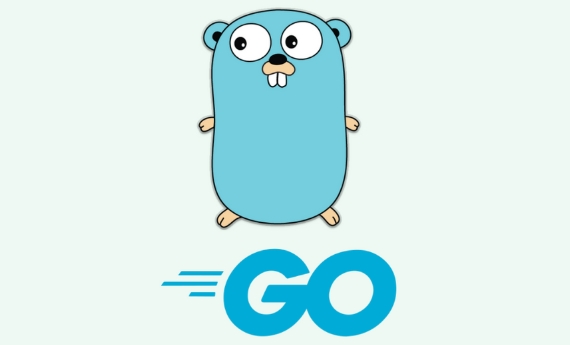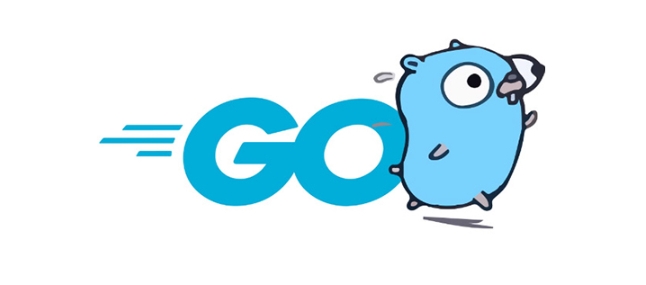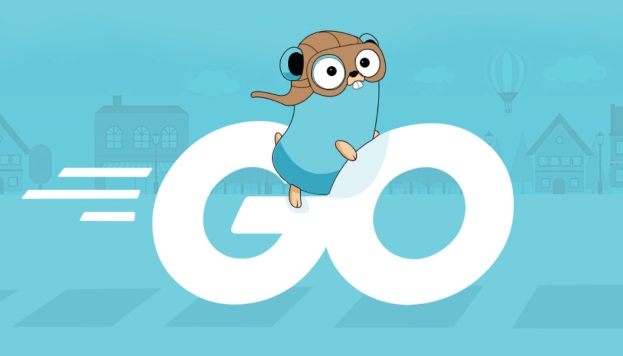Go Graph Database Integrations: Neo4j
Go projects can integrate Neo4j through the Bolt protocol and community library, although it is not a language that Neo4j is officially supported. 1. It is recommended to use neo4j-go-driver. This driver is officially maintained and supports connection pooling, transactions and other functions; 2. The query results need to be manually typed, such as asserting the return value as neo4j.Node and extracting attributes; 3. Optimizing performance by configuring connection pool parameters, such as setting the maximum number of connections and timeout time, and it is recommended to set the driver instance as a global singleton; 4. Error handling needs to be handled in layers, including network authentication errors and Cypher syntax errors, and should be combined with log debugging and considered for unified management. Through the above method, Go can achieve efficient and stable operation of Neo4j.

Neo4j is one of the most popular graph databases at present, and many projects developed using the Go language will also consider integrating with Neo4j. Although Go is not officially the most preferred language for Neo4j (the official SDK mainly supports Java, Python, and JavaScript), Go can still connect and operate Neo4j well through the Bolt protocol and community-driven libraries.

Here are some practical suggestions and precautions for integrating Neo4j in Go.
Use the official Bolt protocol community library
Neo4j provides a communication method based on the Bolt protocol through which Go projects can interact. There is currently no official Go driver, but there are several active open source projects available:

- neo4j-go-driver : a lightweight driver officially maintained by Neo4j
- neo4j-go (not Redis, this is a community-maintained Neo4j Go client)
It is recommended to use neo4j-go-driver , which provides relatively standard interfaces and supports connection pooling, transactions and other functions.
The sample code is as follows:

package main
import (
"fmt"
neo4j "github.com/neo4j/neo4j-go-driver/v5/neo4j"
)
func main() {
driver, err := neo4j.NewDriver("neo4j://localhost:7687", neo4j.BasicAuth("username", "password", ""))
if err != nil {
panic(err)
}
defer driver.Close()
session := driver.NewSession(neo4j.SessionConfig{AccessMode: neo4j.AccessModeWrite})
defer session.Close()
result, err := session.Run("CREATE (a:Person {name: $name}) RETURN a.name", map[string]interface{}{
"name": "Alice",
})
if err != nil {
panic(err)
}
if result.Next() {
fmt.Println("Created person:", result.Record().Values[0])
}
}Pay attention to type conversion when processing query results
The data structure returned by Neo4j is relatively flexible, such as nodes, relationships, paths, etc., and type judgment and conversion are required manually in Go.
For example, a node may be of type neo4j.Node after returning, and you can access its properties through the field name:
record, err := result.Single()
if err != nil {
panic(err)
}
node, ok := record.Values[0].(neo4j.Node)
if !ok {
// Not the expected Node type}
name, _ := node.Props["name"].(string)For complex structures, such as paths or lists, recursive processing may be required. It is recommended to encapsulate some tool functions to simplify this type of conversion.
Connection pooling and performance optimization suggestions
By default, neo4j-go-driver supports connection pooling. You can control the maximum number of connections, idle timeout, etc. through configuration parameters:
config := func(c *neo4j.Config) {
c.MaxConnectionPoolSize = 50
c.ConnectionAcquisitionTimeout = 30 * time.Second
}
driver, _ := neo4j.NewDriver("neo4j://localhost:7687", authToken, config)In actual deployment, it is recommended:
- Set
driverinstances as global singletons to avoid frequent creation and destruction - Turn on Session using
ReadorWritemode as needed - Appropriately increase the connection pool size in high concurrency scenarios to prevent request blocking
In addition, try to avoid executing multiple irrelevant queries in a transaction, and Neo4j has performance overhead for operations within a transaction.
Error handling and log debugging
When Go calls Neo4j, error messages usually come from two levels:
- Network or authentication failure : If the address is wrong, the password is incorrect, etc., an error will be returned in
NewDriverorRun. - Cypher Syntax Error or Constraint Conflict : This type of error is exposed when
result.Next()orresult.Single()is executed.
It is recommended to do error checks for each step and print detailed log information to facilitate troubleshooting.
If you are using a microservice architecture, you can also encapsulate Neo4j query logic into an independent service layer for unified management and monitoring.
Basically that's it. Although the integration of Go and Neo4j is not as "out of the box" as Python, it can also achieve stable and efficient graph data operations with the help of the mature Bolt protocol and existing Go libraries.
The above is the detailed content of Go Graph Database Integrations: Neo4j. For more information, please follow other related articles on the PHP Chinese website!

Hot AI Tools

Undress AI Tool
Undress images for free

Undresser.AI Undress
AI-powered app for creating realistic nude photos

AI Clothes Remover
Online AI tool for removing clothes from photos.

ArtGPT
AI image generator for creative art from text prompts.

Stock Market GPT
AI powered investment research for smarter decisions

Hot Article

Hot Tools

Notepad++7.3.1
Easy-to-use and free code editor

SublimeText3 Chinese version
Chinese version, very easy to use

Zend Studio 13.0.1
Powerful PHP integrated development environment

Dreamweaver CS6
Visual web development tools

SublimeText3 Mac version
God-level code editing software (SublimeText3)
 Go interface: Necessity under non-forced implementation
Sep 09, 2025 am 11:09 AM
Go interface: Necessity under non-forced implementation
Sep 09, 2025 am 11:09 AM
Although Go's interfaces do not force explicit declaration implementations of types, they are still crucial in implementing polymorphism and code decoupling. By defining a set of method signatures, the interface allows different types to be processed in a unified way, enabling flexible code design and scalability. This article will explore the characteristics of the Go interface in depth and demonstrate its application value in actual development through examples.
 How to determine the files involved in compilation during Go build?
Sep 09, 2025 am 11:57 AM
How to determine the files involved in compilation during Go build?
Sep 09, 2025 am 11:57 AM
This article aims to help developers understand how to determine which files will be compiled and linked in a Go project, especially if system-specific files exist. We will explore two methods: parse the output using the go build -n command, and use the Import function of the go/build package. With these methods, you can have a clear understanding of the build process and better manage your project.
 Resolve Go WebSocket EOF error: Keep the connection active
Sep 16, 2025 pm 12:15 PM
Resolve Go WebSocket EOF error: Keep the connection active
Sep 16, 2025 pm 12:15 PM
This article aims to resolve EOF (End-of-File) errors encountered when developing WebSocket using Go. This error usually occurs when the server receives the client message and the connection is unexpectedly closed, resulting in the subsequent messages being unable to be delivered normally. This article will analyze the causes of the problem, provide code examples, and provide corresponding solutions to help developers build stable and reliable WebSocket applications.
 How do you read and write files in Golang?
Sep 21, 2025 am 01:59 AM
How do you read and write files in Golang?
Sep 21, 2025 am 01:59 AM
Goprovidessimpleandefficientfilehandlingusingtheosandbufiopackages.Toreadasmallfileentirely,useos.ReadFile,whichloadsthecontentintomemorysafelyandautomaticallymanagesfileoperations.Forlargefilesorincrementalprocessing,bufio.Scannerallowsline-by-liner
 Start an external editor in the Go program and wait for it to complete
Sep 16, 2025 pm 12:21 PM
Start an external editor in the Go program and wait for it to complete
Sep 16, 2025 pm 12:21 PM
This article describes how to start an external editor (such as Vim or Nano) in a Go program and wait for the user to close the editor before the program continues to execute. By setting cmd.Stdin, cmd.Stdout, and cmd.Stderr, the editor can interact with the terminal to solve the problem of startup failure. At the same time, a complete code example is shown and precautions are provided to help developers implement this function smoothly.
 What is the empty struct struct{} used for in Golang
Sep 18, 2025 am 05:47 AM
What is the empty struct struct{} used for in Golang
Sep 18, 2025 am 05:47 AM
struct{} is a fieldless structure in Go, which occupies zero bytes and is often used in scenarios where data is not required. It is used as a signal in the channel, such as goroutine synchronization; 2. Used as a collection of value types of maps to achieve key existence checks in efficient memory; 3. Definable stateless method receivers, suitable for dependency injection or organization functions. This type is widely used to express control flow and clear intentions.
 How to read configuration from files in Golang
Sep 18, 2025 am 05:26 AM
How to read configuration from files in Golang
Sep 18, 2025 am 05:26 AM
Use the encoding/json package of the standard library to read the JSON configuration file; 2. Use the gopkg.in/yaml.v3 library to read the YAML format configuration; 3. Use the os.Getenv or godotenv library to overwrite the file configuration; 4. Use the Viper library to support advanced functions such as multi-format configuration, environment variables, automatic reloading; it is necessary to define the structure to ensure type safety, properly handle file and parsing errors, correctly use the structure tag mapping fields, avoid hard-coded paths, and recommend using environment variables or safe configuration storage in the production environment. It can start with simple JSON and migrate to Viper when the requirements are complex.
 What are middleware in the context of Golang web servers?
Sep 16, 2025 am 02:16 AM
What are middleware in the context of Golang web servers?
Sep 16, 2025 am 02:16 AM
MiddlewareinGowebserversarefunctionsthatinterceptHTTPrequestsbeforetheyreachthehandler,enablingreusablecross-cuttingfunctionality;theyworkbywrappinghandlerstoaddpre-andpost-processinglogicsuchaslogging,authentication,CORS,orerrorrecovery,andcanbechai







